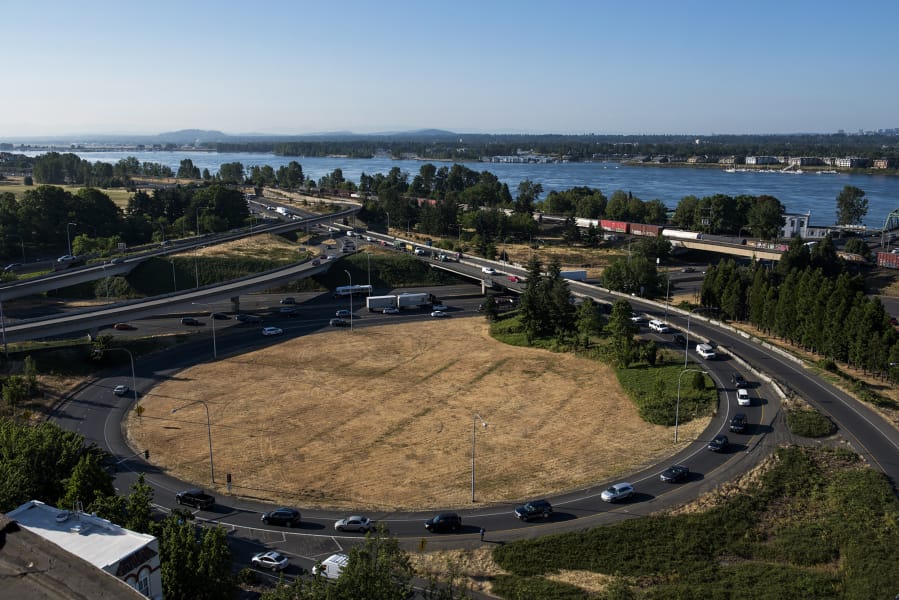Ramp meters are signals used during peak travel periods to control the frequency of vehicles entering the freeway. The meter in question is at the confluence of two onramps to I-5 southbound, from state Highway 14 westbound and from downtown Vancouver near Fifth and Washington streets.
The Washington State Department of Transportation says it uses ramp meters to reduce collisions and decrease travel times for commuters. Most ramp meters allow one vehicle through on each green light, creating a 4- to 15-second delay between cars entering the freeway.
Currently, the downtown Vancouver meter’s activation varies by day. On Mondays and Fridays, it turns on at 5:10 a.m. From Tuesday through Thursday, the flashing caution lights near the meter start blinking five minutes earlier. After the morning commute clears, the meter operates automatically, said Michael Southwick, a WSDOT traffic engineer.
“It will turn on, depending on the settings in our program, whenever during the day,” Southwick said. “What we’ve noticed with the meter is it’s coming on a lot more during the middle of the day.”
“So, with the continued growth of Clark County and growing traffic congestion on really all of the highways around the county, it’s been turning on,” he said.
The county’s population as of April 1 was estimated at 488,500, an increase of 1.88 percent, or 9,000 people, over the last year. Mike Mohrman, state demographer with the Office of Financial Management, previously told The Columbian that the county’s growth is due to people moving here rather than natural increase (more births than deaths).
The automatic mode turns off at 10 p.m. The delay between cars entering the freeway is unnecessary at night — it would cause a pointless delay for drivers, said Tamara Greenwell, a WSDOT spokeswoman.
Southwick said the state transportation department is analyzing data to decide if the meter should operate on what he described as a more “active mode” with it kept on during the day. Traffic engineers want to get ahead of freeway congestion before it happens, he said, because once it starts, it takes a significant amount of time for I-5 to recover.
For example, the ramp meter previously came on at a different time in the morning, and it was a little late, Southwick said.
The ramp meter was installed in 1997. It previously used sensors in the pavement — inductive loops — that worked like metal detectors. When a metal object, such as a vehicle, passed over or stopped within the sensor’s detection area, it tripped the sensor.
Greenwell said these units often need ongoing maintenance. They have to be replaced whenever a road is repaved, and fixing them requires cutting into the pavement. Now, the ramp meter uses an off-road radar sensor that feeds data into a computer program.
Future upgrades to the interchange include lane splitting the onramp from Highway 14. The ramp will store two lanes of traffic and prevent the queue of vehicles from backing up far onto the highway, Southwick said.
“When the ramp meter is on, it will be a shorter queue,” Southwick said.
Additionally, bigger changes are in store for the freeway next year. WSDOT will install meters on five onramps to Interstate 5 southbound — at Northeast 78th Street, Main Street, 39th Street, Fourth Plain Boulevard and Mill Plain Boulevard.
“When you have one meter by itself, it struggles a bit,” Southwick said. “Having a bunch of them together, it improves traffic. And the benefit of many (ramp meters) is also safety.”
Southwick said WSDOT lacks local data about the benefits of meters, largely due to the fact that there are only two meters in the region. As part of a study, he said, the Minnesota Department of Transportation turned off 430 ramp meters in the Minneapolis-Saint Paul metro area for six weeks to see what would happen. Among the study’s findings: Turning off the meters led to a 22 percent increase in freeway travel times, a 7 percent reduction in freeway speeds and a 26 percent increase in crashes.




